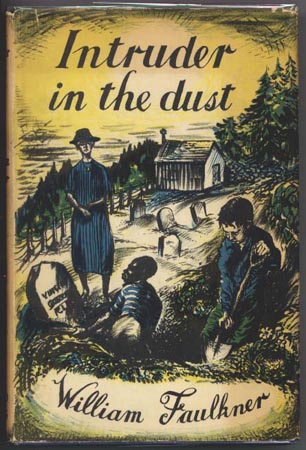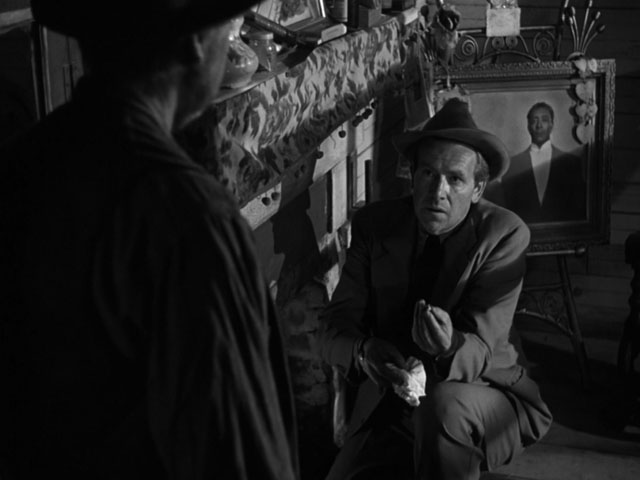
The real criminal is a white relative of the victim.There’s a standoff on the courthouse steps between an unarmed white person and a white mob, who want to lynch the black man.A kid, related to the lawyer, is central to the story-the main character, more or less.A black man is jailed for a horrific crime.Seriously, when “To Kill a Mockingbird” was published in 1960, didn't anyone bring up “Intruder in the Dust”? Let's count it off: It also bears a passing resemblance to a later, much-beloved film. The cinematography is often reminiscent of Dorthea Lange’s Dust Bowl photographs, while Beauchamp (pronounced “Beach-em”) is a type of rich, powerful African-American character that Hollywood, always worried about the Southern market, rarely allowed to be seen on screen. At the least, I was startled by how good “Intruder” is. In The New York Times, Bosley Crowther wrote, “By all our standards of pre-eminence, this is-or will prove-a great film.” It received multiple nominations from the WGA, Golden Globes, and British Academy, and won BAFTA’s short-lived “UN Award” (for the film “embodying one or more of the principles of the United Nations Charter”).

The National Board of Review included it on its top 10 list, and it finished second to “All the King’s Men” in the New York Film Critics Circle’s best picture category. He was right about the latter-did it even play in the South?-but the picture earned critical raves. Mayer felt the protagonist, Lucas Beauchamp (Juano Hernandez), was “uppity,” and that the picture would lose money. There were battles throughout production-both on location in Oxford, Mississippi (Faulkner’s hometown), and at MGM. “If you owe me anything, you owe me a chance to make this picture,” I said. “You’re nuts,” said Mayer, because the hero was a black man. I didn’t walk, I ran up to the front office at MGM.

Three decades later, William Faulkner published his novel about a near lynching, and as Brown recounts: Why did he do it? In Patrick McGilligan’s book, “Film Crazy: Interviews with Hollywood Legends,“ he talks about being in Atlanta during the 1906 race riots when 16 black men were lynched. He was also a member of the right-wing Motion Picture Alliance, and a Southerner, making him an odd choice to push for such a racially progressive picture. “Intruder,” also about racism, only got made because of one man, Clarence Brown, who learned at the feet of Maurice Tourneur, Jacques’ daddy, during the silent era, then became one of the main dudes at MGM during its lush glory days. They were called “message movies” or “problem pictures” and included such films as “Gentleman’s Agreement” and “Crossfire” (anti-Semitism), “Pinky” and “Home of the Brave” (racism).

The story is told from the point of the boy, who intermittently narrates what is effectively his awakening to his unquestioned racism.įilmed in Faulkner’s actual hometown of Oxford, Mississippi and using townspeople as extras a good deal of trouble has been gone to (and perhaps budgetary considerations played their part) to keep the film realistic the settings reinforcing the integrity which is at the heart of the story.ĭirector Brown came out of the silent era and helmed many high profile films for MGM but here he skillfully adopts a low-key sober style that well suits the story (photography was by Robert Surtees) his judgment only slightly erring with an unnecessarily sermonizing closure.Īlthough critically admired the film was marketed as an action thriller and, unsurprisingly, did not do well at the box office.“Intruder in the Dust” was one of several movies produced in the short progressive period between the horror of the Holocaust (when tolerance suddenly seemed like a good idea) and the paranoia of the Red Menace (when fuck it).

Beauchamp insists he's innocent and asks the town's most prominent lawyer, Gavin Stevens (David Brian), to defend him, but it takes a local boy, Chick (Claude Jarman Jr. When he is found standing over the body of a dead white man holding a pistol that has recently been fired a lynch mob quickly gathers. Although it has (fortunately) dated somewhat in subject matter, particularly for its time, which was well before the civil rights movement in America, Intruder In The Dust is am impressively challenging film.īased on a novel by William Faulkner and set in rural Mississippi in the 1940s it tells the story of Lucas Beauchamp (Juano Hernandez) a local black man who arrogantly refuses to play “nigger” to white townsfolk.


 0 kommentar(er)
0 kommentar(er)
